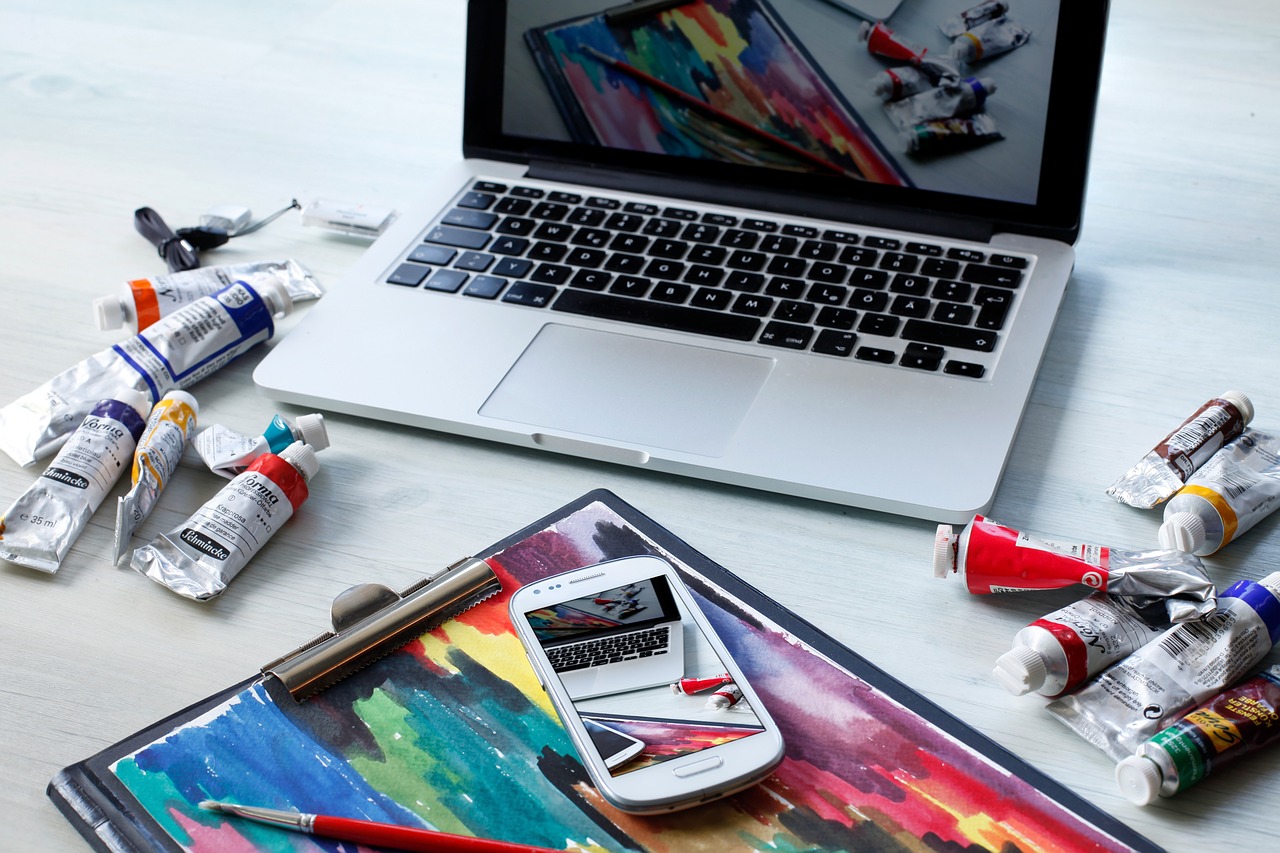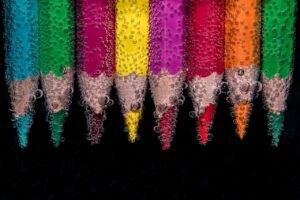Creative expression is more than just a way to pass time or explore one’s artistic abilities—it is a powerful tool for enhancing mental health and emotional well-being. Whether it’s through painting, drawing, writing, dancing, or other forms of artistic expression, creativity provides an outlet for processing emotions, reducing stress, and improving overall mental health. But how exactly does this process work, and what does scientific research say about the connection between creativity and mental well-being?
In this article, we will dive deep into the science behind creative expression and its impact on mental health, exploring what research reveals about the benefits and mechanisms behind this powerful tool for healing and emotional balance.
1. The Connection Between Creativity and Mental Health
Creative expression allows individuals to tap into their inner worlds, making it a therapeutic and transformative experience. Engaging in creative activities can help process complex emotions, relieve tension, and provide a sense of accomplishment. The link between creativity and mental health has been studied extensively, with research showing that people who regularly engage in creative activities often report lower levels of stress, anxiety, and depression.
Key Findings from Research:
- A study published in the Journal of Positive Psychology found that engaging in creative activities on a regular basis can significantly increase positive emotions and overall well-being.
- Research from Psychology of Aesthetics, Creativity, and the Arts suggests that artistic expression allows individuals to externalize their emotions and experiences, providing a pathway for catharsis and emotional release.
Why It Works:
Creative activities activate different areas of the brain, including those responsible for problem-solving, emotional regulation, and self-reflection. This brain activity encourages people to process their emotions and experiences in a non-verbal, abstract way, helping them manage negative feelings and promote mental clarity.
Action Tip: Incorporate at least one creative activity, such as painting or journaling, into your weekly routine. Notice how it helps you process emotions or reduce stress.
2. Creativity as a Stress Reliever
One of the most significant benefits of creative expression is its ability to relieve stress. When you engage in a creative activity, you often enter a state of “flow”—a mental state where time seems to pass effortlessly, and you are fully immersed in the activity. This state of flow is known to promote relaxation and reduce feelings of anxiety.
The Science of Flow:
- The concept of flow, introduced by psychologist Mihaly Csikszentmihalyi, describes a mental state in which a person is completely absorbed in a task, leading to heightened focus and enjoyment. During flow, stress hormones like cortisol decrease, and feel-good chemicals like dopamine increase.
- A study published in Art Therapy: Journal of the American Art Therapy Association found that participants who engaged in coloring activities experienced significant reductions in stress and anxiety levels, especially when the activity encouraged mindfulness.
Why It Works:
Creative activities can serve as a distraction from everyday worries, allowing the brain to relax and reset. This mental break from stressors helps reduce the physiological and emotional toll that chronic stress can have on the body.
Action Tip: Try engaging in mindfulness-based creative activities, such as adult coloring books or painting, when you feel overwhelmed or stressed. Focus on the present moment, and let go of judgment about the final outcome.
3. Emotional Processing Through Creative Expression
Creative expression offers a non-verbal outlet for processing difficult emotions. Art therapy, in particular, has been widely studied for its ability to help individuals explore their feelings and experiences without needing to rely on words. This can be especially helpful for people who find it challenging to articulate their emotions verbally.
The Role of Art Therapy in Emotional Healing:
- Art therapy uses visual art creation to help people express what they might not be able to say with words. Through drawing, painting, or sculpting, individuals can explore trauma, grief, and other difficult experiences in a safe, controlled environment.
- Research published in the Journal of Clinical Psychology shows that art therapy can help people suffering from PTSD (Post-Traumatic Stress Disorder) process traumatic memories and emotions, resulting in reduced symptoms of anxiety and depression.
Why It Works:
When you create art, you engage in a process called “externalization,” which allows you to project inner emotions onto a tangible medium. This process can help gain insight into difficult feelings, making it easier to confront and address them.
Action Tip: Experiment with different forms of artistic expression, such as painting, drawing, or sculpting. Don’t worry about the outcome; focus instead on how the process allows you to explore your emotions.
4. Enhancing Cognitive Function Through Creative Activities
In addition to emotional benefits, engaging in creative expression can improve cognitive function. Creative activities such as writing, drawing, and playing music stimulate different parts of the brain, encouraging new neural connections and promoting mental flexibility. This cognitive stimulation is particularly beneficial for improving problem-solving skills, critical thinking, and memory.
Research Findings:
- A study in Frontiers in Psychology found that individuals who engaged in regular creative activities exhibited better cognitive functioning, including improved memory and attention span.
- Engaging in music, dance, or creative writing has been shown to promote neuroplasticity, the brain’s ability to adapt and form new connections, which is essential for learning and cognitive resilience.
Why It Works:
Creative tasks often require divergent thinking (thinking of multiple solutions to a problem), which activates both the left and right hemispheres of the brain. This mental flexibility can improve overall cognitive functioning and enhance problem-solving abilities in other areas of life.
Action Tip: Challenge yourself with a new creative activity, such as learning a musical instrument or writing short stories. These activities can improve your cognitive function while reducing mental fatigue.
5. Boosting Self-Esteem and Confidence
Creative expression can significantly boost self-esteem and confidence, particularly when individuals engage in activities that allow them to see tangible progress. The sense of accomplishment that comes from creating something unique or mastering a new skill can foster a positive self-image and improve overall mental health.
The Role of Mastery in Mental Health:
- A study published in the Journal of Educational Psychology found that creative activities that involve skill-building (such as learning to draw or play an instrument) lead to higher levels of self-efficacy and self-esteem.
- The act of creating something from scratch, whether it’s a painting, a piece of music, or a written work, allows individuals to take pride in their abilities and achievements, reinforcing a sense of control and competence.
Why It Works:
When you engage in creative activities, you can see the direct results of your efforts. This visual or tangible progress reinforces your belief in your abilities and can counteract feelings of self-doubt or inadequacy.
Action Tip: Set a creative goal for yourself, such as completing a series of drawings or learning a new song on an instrument. Celebrate your progress along the way, and recognize how far you’ve come.
6. Creativity as a Social Outlet
Creative expression can also serve as a way to connect with others and foster social interactions. Whether through group art classes, writing workshops, or collaborative performances, creative activities offer opportunities for social bonding and shared experiences. This social aspect of creativity is particularly beneficial for mental health, as strong social connections are known to reduce feelings of loneliness and depression.
Research on Social Creativity:
- A study from Health Psychology found that individuals who participated in group-based creative activities, such as collaborative painting or group music sessions, reported higher levels of social connectedness and lower levels of anxiety and depression.
- Creative activities can also be used in community settings, such as hospitals or schools, to help individuals cope with stress and build supportive social networks.
Why It Works:
Human beings are inherently social creatures, and shared creative experiences can foster a sense of belonging and reduce feelings of isolation. Collaborative creativity also allows individuals to see new perspectives and learn from others, further enhancing emotional well-being.
Action Tip: Join a creative group or community, whether it’s a local art class, writing group, or online community focused on a creative hobby. Engaging in creative activities with others can help foster a sense of belonging and support.
Conclusion: The Science of Creativity and Mental Health
The scientific research is clear: creative expression plays a crucial role in promoting mental health and emotional well-being. From reducing stress and anxiety to boosting self-esteem and improving cognitive function, creativity provides a multi-faceted approach to maintaining a healthy mind. Whether you engage in art, writing, music, or any other form of creative expression, the benefits are vast and well-supported by research. By incorporating creative activities into your life, you can enhance your emotional resilience, improve your mental clarity, and foster a greater sense of well-being.
Let your imagination run free, Immerse yourself in a world of colors and beauty. Remember, your mental well-being is priceless.
Team coloringbookvibe.com

Coloring Book Vibe is a dedicated publisher of captivating coloring books, along with instructional books on drawing and coloring techniques. We are deeply passionate about the art of coloring, ensuring our designs are always intricate, beautiful, unique, and often infused with a touch of humor. We highly value our customers and always welcome feedback and suggestions. Our collection features an incredible array of coloring books across various genres, including Fantasy, Animals, Mandalas, Doodle Patterns, Floral, Landscapes, Country Scenes, and more.



